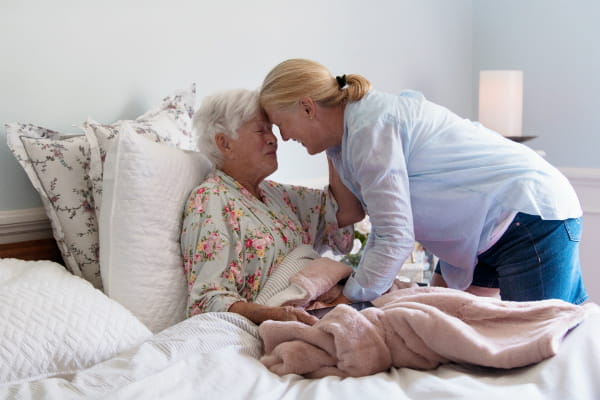When a loved one is seriously or terminally ill, there are options to help ease pain and mental distress. Depending on the person’s diagnosis, he or she would be eligible for palliative or hospice care.
Understanding the difference between palliative and hospice care can help you choose the best course of action for your loved one.
What is palliative care?
Palliative care is a medical subspecialty that offers assistance to individuals living with serious illnesses, such as cancer, chronic obstructive pulmonary disease, heart failure, Parkinson’s disease, AIDS, multiple sclerosis and dementia. Generally, palliative care is started when a diagnosis is made.
Focused on relieving pain and other symptoms, palliative care’s goal is to improve quality of life for the patient, not provide a cure. However, palliative care is often administered in addition to treatment for a condition.
Palliative care may be covered by Medicare, Medicaid and various insurance policies. Veterans may qualify through the Department of Veterans Affairs.
How is palliative care administered?
Palliative care is generally given at home, although it can be done on an outpatient basis. This treatment method is individualized for each person and consists of a combination of medications, therapies and counseling.
The purpose of palliative care is to make the patient as pain-free and comfortable as possible. Therapy focuses on the overall well-being of the patient, including physically, spiritually and emotionally.
When is palliative care appropriate?
Palliative care is ideal for anyone suffering from a serious illness. It makes an excellent addition to a treatment plan that involves seeking a cure. Palliative care can provide relief for symptoms and issues such as pain, diarrhea, nausea and vomiting, constipation, loss of appetite or weight loss, coughing, shortness of breath, depression and difficulty sleeping.
Specialists called in to help with palliative care include doctors, nurses, pharmacists, rehab specialists, nutritionists, social workers and spiritual advisors. Family members also get guidance and support during palliative care.
Benefits of palliative care
Depression is often a result of living in pain and discomfort. If a person’s physical discomfort is alleviated, he or she is likely to experience less depression. When your loved one feels better, he or she is also able to make informed decisions about health care.
When it’s time to transition to hospice care
At some point, your loved may not get better or may decide to discontinue treatment. If it’s determined that he or she is likely to pass away within six months, doctors will suggest transitioning to hospice care.
Hospice care may be given at home or in a facility, such as a hospital, hospice center or nursing home. Medicare may cover hospice care.
Hospice care is more comprehensive than palliative care. In addition to making your loved one more comfortable, a member of the hospice team visits regularly. A hospice nurse is also available 24/7 by phone.
Like palliative care, hospice provides your loved one with medical, emotional and spiritual support. This means visits from nurses and doctors, as well as spiritual advisors and social workers. The aim is to aid the person who is dying and his or her caregivers and family.
Benefits of hospice care
When the end of life nears, it’s a comfort to some individuals to have a say in how they pass. Studies have shown that hospice reduces the likelihood of hospitalization. Hospice care enables your loved one to live out his or her final days with dignity — often at home where family and friends can visit.
Whether your loved one’s condition improves, or his or her end is near, it’s good to know that there are options that help ease symptoms and make the transition easier.
Resources:
- National Institute on Aging, https://www.nia.nih.gov/health/what-are-palliative-care-and-hospice-care
- Medicare.gov, https://www.medicare.gov/coverage/hospice-care



